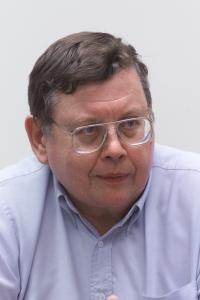UHM Physics Professor John Madey wins Willis E. Lamb Award for Laser Science and Quantum Optics
University of Hawaiʻi at MānoaJohn Madey, a professor in the Department of Physics and Astronomy at UH Mānoa, has received the prestigious 2016 Willis E. Lamb Award for Laser Science and Quantum Optics (http://www.lambaward.org/ ).
Madey is best known for his invention and implementation of the free electron laser (FEL). A FEL device can produce very high intensity and high quality coherent electromagnetic radiation that is also tunable over a wide range of frequency. Madey operates an FEL that he designed and built at Watanabe Hall on the UH Mānoa campus.
The Hawai'i FEL operates in the infrared frequency region and is used for student training and the further development of FEL technology and its applications. Madey's discovery paved the way for the giant X-ray FEL's that operate at SLAC in Stanford, California, SPRING-8 in Harima Science City, Japan, and DESY in Hamburg, Germany. These three $0.5 billion class machines started operation in the last few years and are enabling important discoveries in chemistry, solid-state physics, biology and medicine.
Madey has received numerous awards and international recognition, including the Stuart Ballantine Medal from the Franklin Institute in 1989 and, more recently, the 2012 Robert R. Wilson Prize from the American Physical Society. He was the keynote speaker at the 2015 Nobel Symposium on Free Electron Lasers in Sigtuna, Sweden.
Madey holds 13 patents on FEL related technological inventions. He conducts research, teaches graduate level physics courses, and mentors students and postdocs at UH Mānoa.
The Willis E. Lamb Award for Laser Science and Quantum Optics is presented annually for outstanding contributions to the field. The award honors Willis E. Lamb Jr., renowned laser scientist and 1955 winner of the Nobel Prize in physics.
For more information, visit: http://www.phys.hawaii.edu

